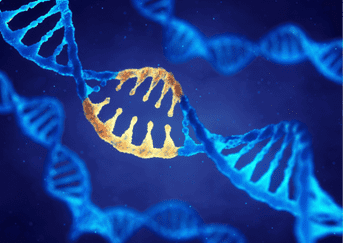DNA Extraction / Purification Reagents (Forensic Sample)
Genetic testing is used for personal identification in medicolegal investigation, and extraction and purification of DNA from body fluids (blood, saliva, etc.) or hair of human bodies are needed as a pretreatment step. Fujifilm Wako offers a lineup of DNA extraction and purification reagents that can be used for body fluids and hair.
More Information
Extraction and Purification of Nucleic Acids for Medicolegal Investigation

A variety of samples, including hair, saliva, blood, bone, or teeth are used for medicolegal investigation. In some cases, many years had passed since the sample was collected, and the preservation conditions of the DNA were not good. The most common samples used in medicolegal investigation and their characteristics are as follows:
Blood
Blood collected from the site where a crime or accident occurred is important evidence to understand the situation of the crime or accident. In many cases, DNA is extracted and purified from the blood. The luminol reagent used in the preliminary bloodstain test may damage DNA if used many times. Therefore, the number of times of use of the luminol reagent must be minimized (to approximately two uses)1).
Saliva
Saliva is commonly used for DNA typing, because it is easily and non-invasively available as a sample. However, the DNA extracted from saliva and used as a template is often contaminated with impurities and bacteria, and in some cases amplification is not successful, depending on the sample and amplification region2).
Hair
The hair root, which is present at the base of hair, contains nuclear DNA, and thus hair can be used as a sample for DNA typing. As with saliva, hair has the advantage that it is easy for anyone to obtain a sample with little pain inflicted on the donor. However, keratin, the main component of hair, is a protein that is not easily degraded, and therefore hair needs to be incubated for a long time in a buffer containing proteolytic enzymes. The melanin pigment contained in hair may inhibit PCR, and as much care as possible is needed to prevent contamination during DNA extraction and purification.
Bones and teeth
For personal identification of unidentified dead bodies, DNA is extracted and purified from hard tissues (bones and teeth) in which preservation of DNA is good. According to a report, when sections of dentin of the teeth were decalcified and degraded by a proteolytic enzyme, and then DNA was extracted with phenol/chloroform, the sex and ABO blood group could be determined by PCR3).
References
- National Police Agency: https://www.npa.go.jp/laws/notification/keiji/kanshiki/kanshiki20190329-5.pdf (2019). (Japanese)
- Sato, K. et al.: THE JOURNAL OF THE STOMATOLOGICAL SOCIETY, JAPAN, 68(1), 151(2001).
Usefulness of oral tissues as DNA samples (Japanese) - Watanabe, A.: Japanese J. Oral Biol., 40(4), 241(1998).
Usefulness of personal identification using DNA extracted from teeth (Japanese)
For research use or further manufacturing use only. Not for use in diagnostic procedures.
Product content may differ from the actual image due to minor specification changes etc.
If the revision of product standards and packaging standards has been made, there is a case where the actual product specifications and images are different.



